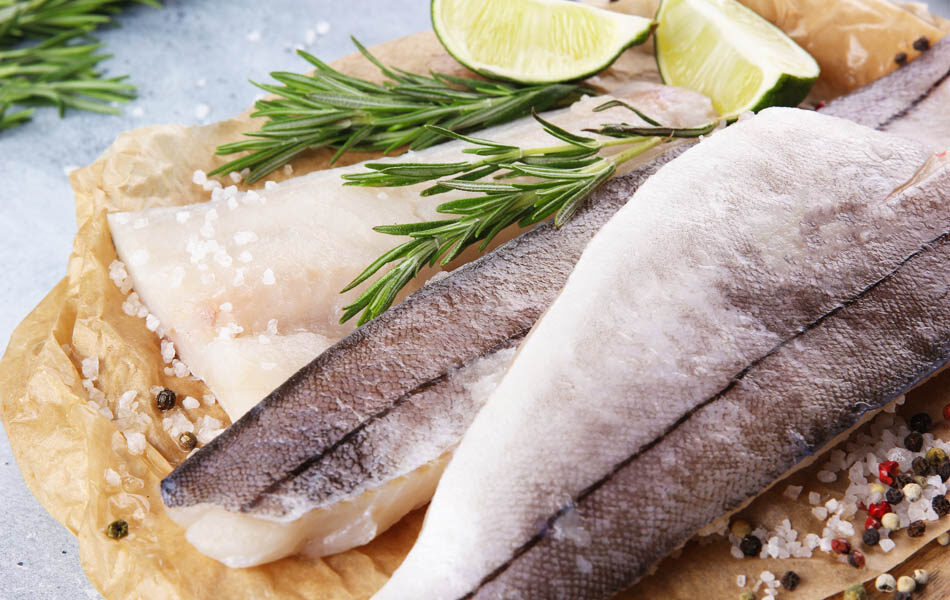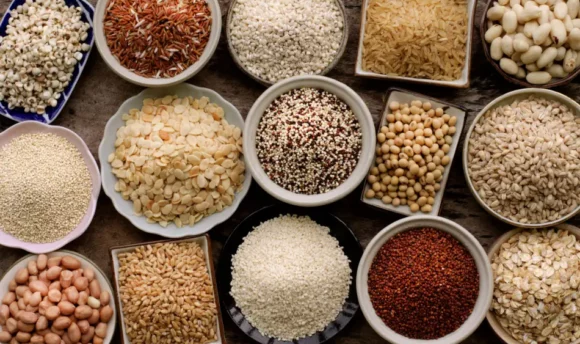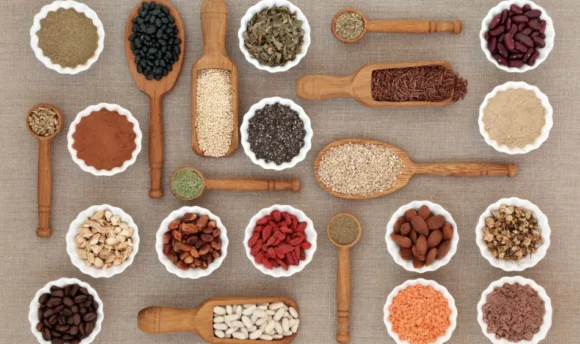Is Haddock Healthy? All You Need to Know About This Fish
Haddock is a lean white fish that goes with most dinner meals. You might feel eager to try this food on a balanced diet, but is it healthy? We provide nutrition facts about haddock, potential health benefits, disadvantages, and a low-calorie recipe you can make at home.

Consuming haddock has many long-term benefits for your health.
You can prepare haddock in many different ways while pairing it with several nutrient-dense meals. Many people forget that protein-rich fish is important for building strength. Gaining those essential minerals can fuel weight loss and help you grow muscle sustainably.
So, now it’s time to learn how haddock could improve your dietary routine. You’re bound to discover some worthwhile advantages, from protecting your heart to supporting muscle tissue.
Are you interested to learn more about haddock? Just keep on reading.
Is Haddock Healthy?
Yes, haddock is a fresh, healthy fish that can fuel your body with important minerals. You should aim to consume nutrient-dense foods if you want to prevent diseases. Since haddock is also low in calories, people looking to lose weight can eat it regularly.
There are some misconceptions that haddock isn’t suitable for a balanced diet. Many people believe the mercury content and low price represent the nutritional value. However, the way you prepare haddock is important, and there’s nothing wrong with eating it every week.
Haddock is healthy because it is a great source of protein and fatty acids. You need these nutrients to maintain good heart functions and bones. Since haddock has a low mercury content, it can’t harm you when eaten moderately with other foods throughout the week.
The American Heart Association recommends people eat fish twice a week. This can be a great excuse for trying new fish like haddock, pollock, tuna, swordfish, and herring. Another great thing about haddock is that it’s low in fat, meaning people who want to lose weight can try it on their diet.
To ensure you keep this fish nutritious, don’t add too much salt during cooking. Just add natural seasonings, like garlic and thyme, to keep the fish tasting fresh. You can use haddock in soups, salads, and casseroles, making it versatile for anyone seeking a healthy meal plan.
What Is Haddock?
Haddock is a member of the cod family and has a mildly distinct flavor. This white fish is commonly sold smoked, frozen, or fresh in local markets. Common haddock fish are located in the North Atlantic Ocean and can be caught near Greenland.
Haddock has white, firm flesh. People love breaking apart cooked haddock filets to make fish and chips or popular dishes like chowder. Plus, this delicious fish is also inexpensive compared to other seafood products since it requires easy preparation and less maintenance.
Normal or smoked haddock can be sold fresh and in canned forms. Nowadays, people buy frozen packets to avoid long preparation. Fresh haddock, when sold in local markets, is best, as there are no chemical preservatives, saturated fats, or sugars that strip away any health benefits.
Haddock is a versatile fish because you can fry, grill, or bake it. You could mix it with some olive oil and garlic cloves to spice up the mild flavor. Just make sure you’re following healthy preparation methods that retain the important minerals without ruining the unique taste.
3 Health Benefits of Haddock
People may be eager to know the benefits of consuming this fish. You can incorporate cooked haddock filets into your weekly meals just to stay healthy for longer. Remember that fish isn’t for everyone, so don’t feel disheartened if you don’t enjoy the slightly sweeter taste of haddock.
Below are some health benefits of haddock:
#1 Source of omega-3 fatty acids
Omega-3 fatty acids are types of healthy fats that keep your organs functioning properly. They can support hormones that regulate blood clotting, artery wall contractions, and inflammation. You need at least 450–500mg of omega-3 a day to prevent future health problems.
#2 Rich in B vitamins
B vitamins play an important role in protecting the body’s cells. These vitamins can help convert food into energy while creating new red blood cells. Some other benefits comprise better skin health, immune cells, brain function, muscle tissue, and digestion after nutrient-dense meals.
#3 Promotes stronger bones
Haddock fish contains phosphorus and selenium – two minerals that keep your bones and teeth strong. Selenium especially slows down a process called osteoclasts. This is the activation of cells that break down your bone and cause conditions like osteoporosis and fibromyalgia.
Possible Disadvantages of Haddock
There are bound to be some disadvantages to eating fish regularly. You should consider the negatives before trying new foods or eating meals with higher mercury content. If you have health conditions and feel unsure about eating haddock, consult with a dietitian beforehand.
Here are some downsides to consuming haddock:
#1 Can cause allergies
People with a fish allergy won’t enjoy eating something like haddock. A professional allergist will most likely recommend other food sources that provide similar benefits. Eating haddock and other fish might cause hives, stomach cramps, nausea, anaphylaxis, or chronic migraines.
#2 Might have high levels of mercury
There is a chance you could experience mercury contamination. Smoked haddock might contain high amounts of mercury – a toxic element that damages your brain. However, you have to eat haddock excessively if you are to get mercury poisoning and other side effects.
Nutrition Facts of Haddock
You should learn the nutrition facts about a haddock filet before purchasing it. This ensures you’re gaining the right vitamins and minerals in your diet. For those aiming to lose stubborn weight, it’s also worth studying the calories and protein content to see if haddock is suitable.
Below is the nutritional value of haddock per 100g:
Nutritional value per 100g
| Calories/ Nutrients per 100g | Amount |
| Calories (kcal) | 74 |
| Net Carbs (g) | 0 |
| Fiber (g) | 0 |
| Sugar (g) | 0 |
| Fats (Total) | 0.45 |
| Protein (g) | 16.3 |
| Cholesterol (mg) | 54 |
Source: https://fdc.nal.usda.gov/fdc-app.html#/food-details/333374/nutrients
Low in fat
Fresh smoked haddock contains no saturated fats. The only fats include monounsaturated and polyunsaturated – fatty acids that protect your heart. Just remember that consuming enough good fat is important, so aim to eat other foods like avocado, salmon, or cottage cheese.
High in protein
You need protein to maintain healthy bones and muscles. People should get at least 10–35% of protein from their total daily calories. Since haddock contains a high amount of this nutrient, you can consume 1–2 servings throughout the week to maintain lean muscle mass.
Healthy Haddock Recipe
There are plenty of easy recipes you can make using haddock. Just make sure to choose ones that don’t contain chemical preservatives, added sugars, and saturated fats.
Here are the ingredients and directions for a low-calorie haddock meal:
Ingredients
- 4–6oz skinless and boneless haddock
- Salt
- Pepper
- 4 tbsp olive oil
- 1 lemon cut into pieces
- 1 cup tomatoes
- 2 garlic cloves
- 2 thyme leaves
How to prepare
- Preheat your oven to 400F.
- Prepare any type of baking dish for the haddock.
- Dry off the haddock and sprinkle it with pepper and salt.
- Add the lemon, garlic, thyme, and tomatoes to a bowl and mix.
- Pour the mixture into the baking dish. Place the dried and seasoned haddock pieces on top, making sure they’re coated in the tomatoes/garlic/lemon/thyme.
- Bake for 15–20 minutes or until the haddock turns opaque.
- Remove the dish from your oven and enjoy your meal.
For more guidance on low-calorie fish recipes, consider trying the DoFasting app. You can find hundreds of meal plans that suit your diet and weight preferences. Plus, there are also customized recipes for people who want to lose stubborn weight or generally feel healthier.
FAQs
Yes, haddock does contain cholesterol, but this won’t harm your health. Certain fish have dietary cholesterol that contributes to hormone balance and cell production. If you have high blood pressure or diabetes, consider talking to a registered dietitian before consuming haddock.
Haddock contains a good amount of omega-3 fatty acids. These good fats can prevent heart disease, control rheumatoid arthritis, and improve your eye health. You should be eating plenty of omega-3 foods on your balanced diet if you wish to protect your body in the long term.
Both haddock and salmon have unique traits that make them healthy. Salmon has a higher protein content, while haddock has fewer calories. You can choose a fish that suits your dietary preferences, but there’s no harm in incorporating both foods into your weekly meal plan.
A Word From a Nutritionist
Consuming fresh haddock is recommended for anyone building a balanced diet. You can pair this fish with other protein-rich foods to benefit your health. Studies have proved that deep sea fish usually have more omega-3 fatty acids that support heart health and immune functions.
Of course, haddock isn’t the only option in today’s fish market. There is sea bass, mackerel, flounder, sardines, tuna, trout, and halibut. Each product contains a unique mix of vitamins and minerals, making it perfect for people who want to improve their gut barrier integrity.
Just be aware that some haddock filets may have high levels of mercury. Eating too much food with a high mercury content could cause damage to your kidneys. Instead, aim to have haddock once a week. This should keep the kidneys protected while limiting the exposure amount.
Conclusion
Cooked haddock is the perfect fish to have on your diet. This oceanic fish contains plenty of omega-3, potassium, magnesium, phosphorus, and calcium. If you do want to consume haddock while being healthy, monitor how much you have to reduce your mercury intake.

















































 Select your language:
Select your language: 








